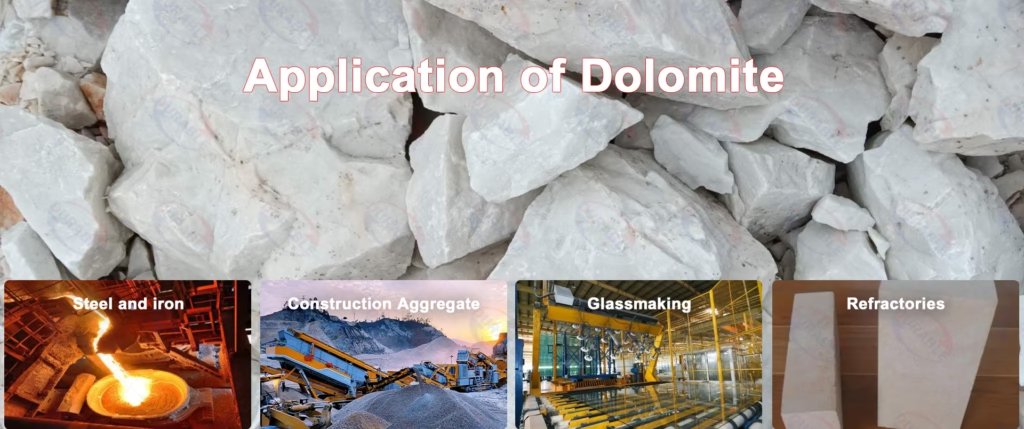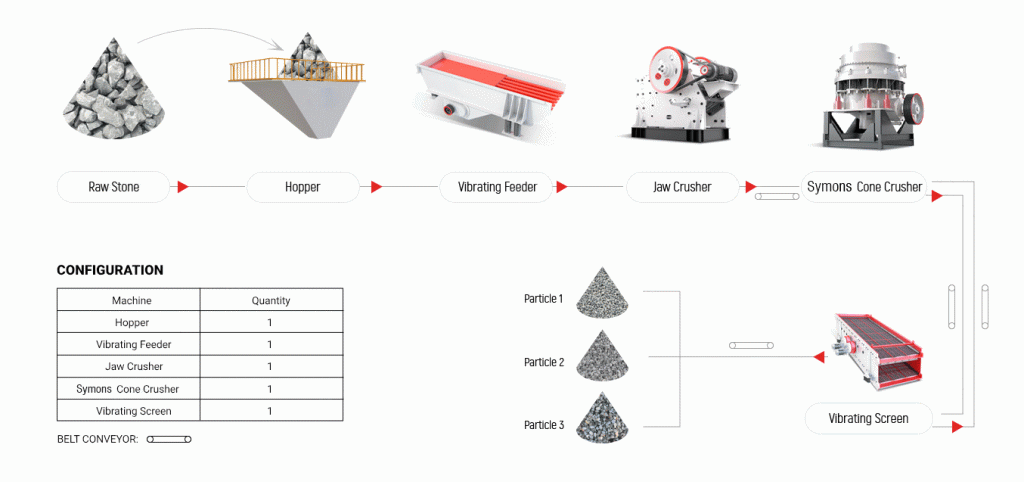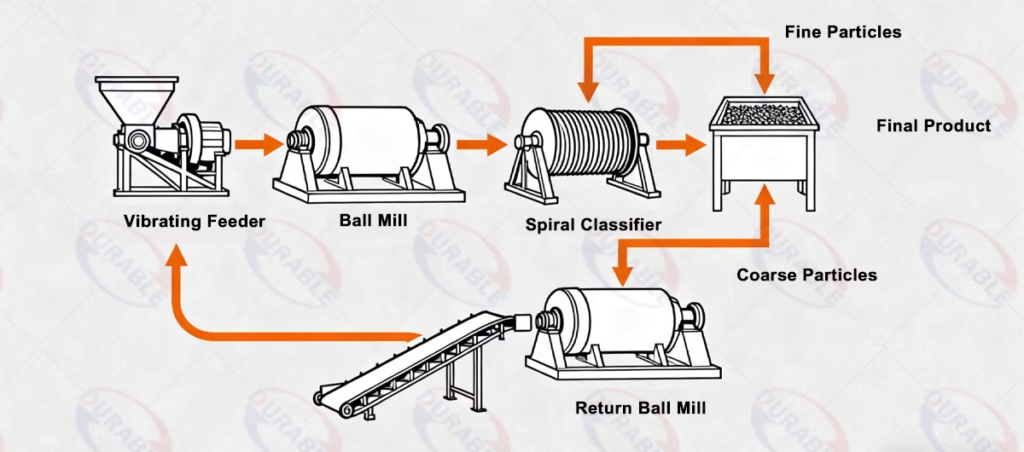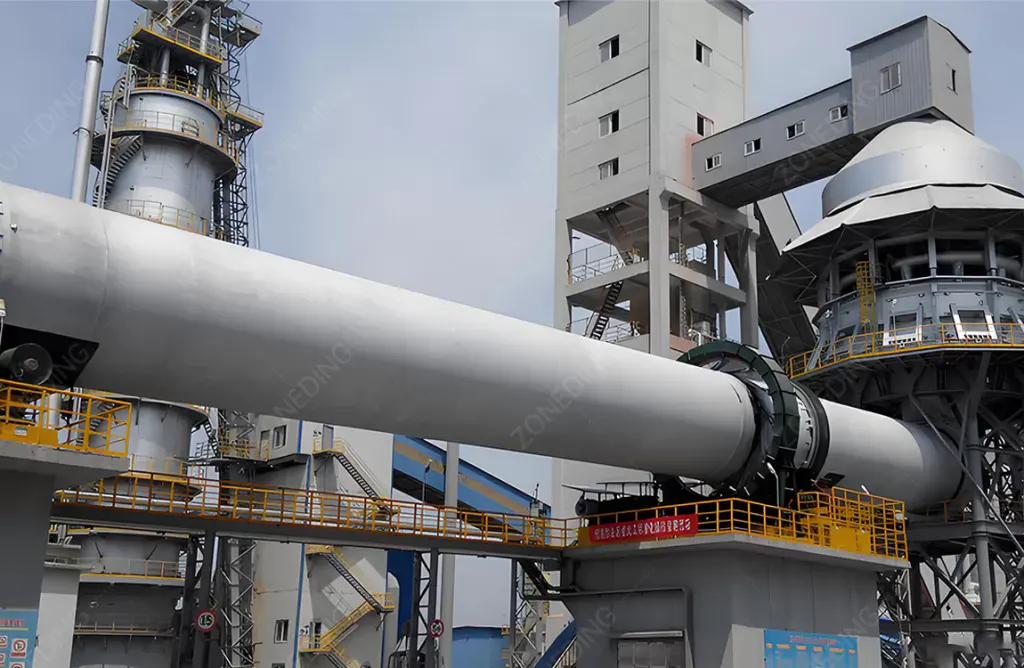Gold Cyanidation: From Process Types to Plant Construction
3609Your ultimate guide to gold cyanidation. Explore CIL/CIP types, detailed processes, and the complete steps for successful plant construction and optimization.
View detailsSearch the whole station Crushing Equipment
At ZONEDING, I have seen many investors look at a piece of dolomite and see only a simple grey rock. This perspective can be a costly mistake. The true value of dolomite is unlocked not by what it is, but by what you can turn it into. The key principle is that the end market dictates your entire dolomite processing line. You do not just “process dolomite”; you configure a specific process to produce a product for a specific customer.
This guide will walk you through how to configure your production line configuration to move from low-value bulk materials to high-value industrial powders and chemicals. We will cover the different dolomite uses and the specific equipment required for each.
Before you purchase a single machine, you must understand your target customer. The required particle size and chemical purity of the final product determine every subsequent decision in your plant design. Dolomite is not a one-size-fits-all material. The value escalates dramatically as the processing becomes more sophisticated and the specifications become stricter.
Construction markets need specific sizes of construction aggregate. Glass and ceramic markets need high-purity powder with strict chemical specs. Metallurgy and refractory markets need calcined dolomite with specific reactivity and strength.

The rock is the same. The knowledge of how to process it and who to sell it to is what makes the difference. You must understand the specific requirements before you buy a single machine.
The value of your dolomite is directly tied to the complexity of the processing and the strictness of the customer’s specifications.
| Market | Key Requirement | Value |
|---|---|---|
| Construction Aggregate | Cubical Shape, Specific Size (e.g., 0-40mm) | Low |
| Agriculture / Glass | Fineness (e.g., 200 mesh), Purity (Low Fe) | Medium |
| Steel Flux / Refractories | Calcined State, High Purity (Low SiO2) | High |
The lowest-value market, construction, is a game of tons and pennies. Your profit is in efficiency. As you move up to powders for glass or calcined products for steel, you are no longer selling a rock. You are selling a chemical with precise specifications. This requires a more advanced production line configuration and brings much higher profits.
This is the most common and lowest-capital entry point into the dolomite market. The goal is to produce specific sizes of stone for the construction industry. The entire process is a physical size-reduction operation. A typical Stone Crushing Plant is designed for efficiency and producing a high-quality, cubical shape.
The process flows in distinct stages:

To enter the more lucrative markets for glass, ceramics, or agricultural fillers, you must grind the dolomite into a fine powder. This process moves beyond simple crushing into the realm of fine milling, where the Ball Mill is a cornerstone piece of equipment. The goal is to produce a consistent powder with a specific fineness, often measured in mesh.
For powders, you need a dolomite ball mill. A Wet ball mill is often better for high purity. It must work in a closed-circuit system with a Spiral Classifier to achieve precise fineness for glass raw material.
Here, the chemistry of your rock matters. You are selling molecules, not just mass. The value is in the surface area and purity. This requires a completely different set of machines.
The goal is to produce a fine, consistent powder. This cannot be done with a crusher.

| Component | Equipment | Function in the System |
|---|---|---|
| Grinding | Dolomite Ball Mill | Reduces crushed particles (e.g., <25mm) to a fine powder (e.g., 200 mesh). |
| Classification | Spiral Classifier / Hydrocyclone | Separates the on-spec fine powder from the coarse material. |
| Material Handling | Vibrating Feeder, Conveyors | Ensures a stable, consistent flow of material into the mill. |
The highest-value dolomite products are used in metallurgy and for making refractory bricks. This requires a chemical transformation of the rock through calcination. This process drives off the carbon dioxide (CO₂) to produce calcium oxide (CaO) and magnesium oxide (MgO), known as “calcined dolomite” or “active ash.”

The core of dolomite calcination is the Rotary Kiln. It transforms dolomite into active lime. A complete system also needs a preheater to save energy and a robust dust collection system for environmental compliance.
This is where dolomite becomes a high-temperature industrial ceramic. The value is the highest, but the processing is the most complex and expensive. You are This process is essentially a chemical plant centered around a few key pieces of equipment:
The investment required for a dolomite processing production line varies dramatically based on your target market.
The most critical step in your project is designing a flowsheet that matches your specific dolomite characteristics to your target market’s needs. As a manufacturer of a full range of dolomite crushing equipment and processing machinery, we at ZONEDING provide this expertise as part of our service.
Our process is simple:
| Your Input | Our Output |
|---|---|
| Target Market & Product Specs | The Correct Process Route (Crushing / Grinding / Calcination). |
| Capacity & Feed Size | Correct Equipment Models and Sizes. |
| Ore Characteristics (if known) | Optimized Equipment Selection (e.g., Impact vs. Cone). |
| Site Conditions | A Preliminary Plant Layout and Budget Estimate. |
This ensures your investment is based on solid data, not guesswork. Contact us today to get a free, professional configuration plan for your dolomite project.
Your ultimate guide to gold cyanidation. Explore CIL/CIP types, detailed processes, and the complete steps for successful plant construction and optimization.
View detailsMaximize efficiency in mineral processing! Uncover performance of five key crusher types, optimized for throughput, energy, and cost-saving ore reduction.
View detailsThe perfect solution for gold mining. Our portable hard rock crushers are engineered to process gold-bearing ore efficiently.
View detailsReduce costly downtime and extend the service life of your ball mill liners. Discover 5 expert solutions to diagnose and fix the root causes of rapid wear.
View detailsWe use cookies to ensure that we give you the best experience on our website. If you continue to use this site we will assume that you are happy with it.
Privacy Policy